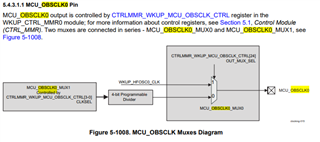Does TDA4VMid(or MidEco) capable of generating 20MHz clock output (recommended accuracy of better than ± 500 ppm) from MCU island? It is required in our design to connect it other SoC.
-
Ask a related question
What is a related question?A related question is a question created from another question. When the related question is created, it will be automatically linked to the original question.


